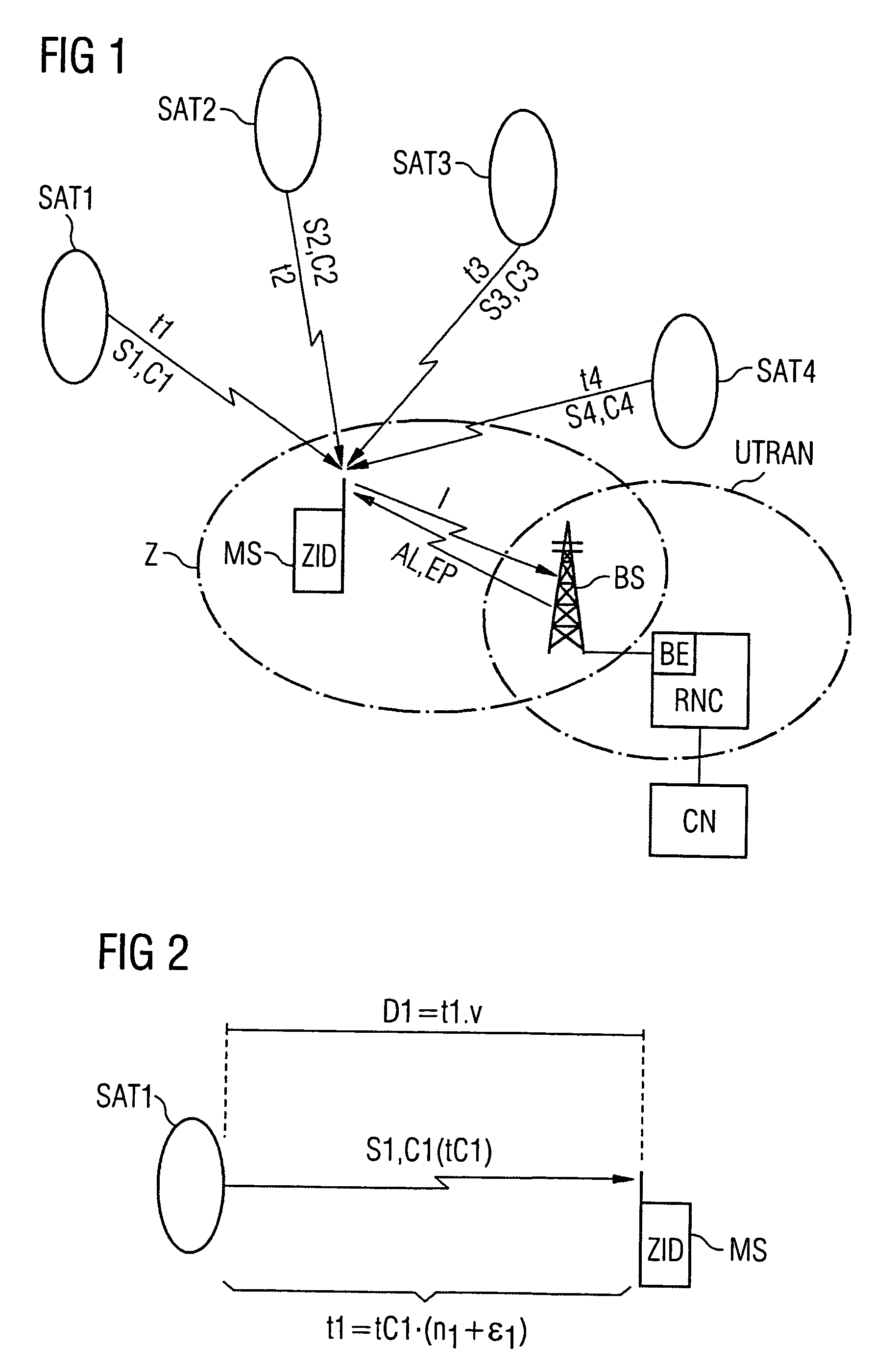Method for iterative determination of distance between receiving station and transmitting station and also calculating unit and computer software product
- Summary
- Abstract
- Description
- Claims
- Application Information
AI Technical Summary
Benefits of technology
Problems solved by technology
Method used
Image
Examples
Embodiment Construction
[0017]Reference will now be made in detail to the preferred embodiments of the present invention, examples of which are illustrated in the accompanying drawings, wherein like reference characters refer to like elements throughout.
[0018]A receiving station is any station that is able to receive signals. In the text that follows, a mobile station is considered to be a receiving station. A mobile station is, for example, a mobile phone or also a device the location whereof can be moved, for the transmission of image and / or sound data, for sending faxes, for sending short messages via a Short Message Service (SMS), for sending emails and for Internet access. It is therefore a general transmitting and / or receiving unit in a radio communications system.
[0019]A transmitting station is understood to be a station that is able to transmit a signal provided with a code, i.e. a modulated signal. A transmitting station may be assigned to a radio communications system or be an external station th...
PUM
 Login to View More
Login to View More Abstract
Description
Claims
Application Information
 Login to View More
Login to View More - R&D
- Intellectual Property
- Life Sciences
- Materials
- Tech Scout
- Unparalleled Data Quality
- Higher Quality Content
- 60% Fewer Hallucinations
Browse by: Latest US Patents, China's latest patents, Technical Efficacy Thesaurus, Application Domain, Technology Topic, Popular Technical Reports.
© 2025 PatSnap. All rights reserved.Legal|Privacy policy|Modern Slavery Act Transparency Statement|Sitemap|About US| Contact US: help@patsnap.com


